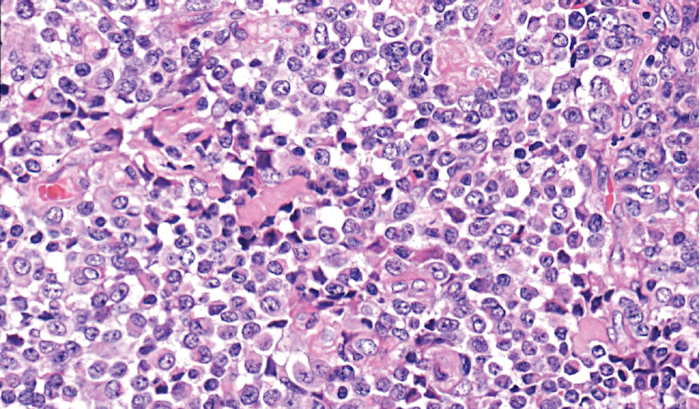Atypical Teratoid/Rhabdoid Tumor
(AT/RT)

Summary of
Atypical Teratoid/Rhabdoid Tumor
Central nervous system (CNS) atypical teratoid/rhabdoid tumor (AT/RT) is a very rare, fast-growing tumor of the brain and spinal cord. It usually occurs in children aged three years and younger, although it can occur in older children and adults. About half of these tumors form in the cerebellum or brain stem. The cerebellum is the part of the brain that controls movement, balance, and posture. The brainstem controls breathing, heart rate, and the nerves and muscles used in seeing, hearing, walking, talking, and eating. AT/RT may also be found in other parts of the central nervous system (brain and spinal cord). The WHO 2016 classification indicates Embryonal tumor.
Available CBTN Biospecimens
participants with flash-frozen tissue available
participants with match blood
participants with match parental specimens
participants with cerebral spinal fluid
Available CBTN Pre-clinical Models
genomically characterized cell lines with data available
genomically characterized pdx with data available
How do I get access to the specimens?
To request any of the biospecimens, or pre-clinical model please fill out this form.
Request take approx. 3 months and will require review by the scientific committee and MTA.
Need help? Contact us at research@cbtn.org
Explore the data in these informatics portals
How do I get access to the data?
To access the data please follow these instructions. Need help? Contact us at research@cbtn.org
You can access processed data today here by simply logging in to PedcBioPortal
You can request raw data by completing this form. The review normally takes 1 week. Once approved you can access the raw data by creating cohorts of interest on the Kids First Data Resource Portal and performing analysis on the cloud in Cavatica
featured
Scientific Projects

Specimen
Planning
Impeding LIN28 Function in ATRT
A lack of atypical teratoid rhabdoid tumor samples representing all subtypes has stalled the understanding of this complex disease. Identifying subtypes based on molecular characteristics may provide therapeutic strategies for suppressing growth, proliferation, and development of ATRT. Using cell lines provided by the Children’s Brain Tumor Network, researchers will investigate subtype-dependent responses to known treatments.
(AT/RT)

Giselle Saulnier Sholler

Specimen
Ongoing
Oncolytic Virus to Potentiate Immune-checkpoint Blockade in Immunologically Cold Pediatric Brain Tumors
The use of an oncolytic virus refers to the use of a virus to stimulate immune response in a tumor. Researchers will utilize carefully catalogued samples provided by the Children’s Brain Tumor Network to further explore the use of oncolytic viruses in the treatment of pediatric brain cancers.
Medulloblastoma

Aaron Diaz

Specimen
Ongoing
Using Whole Genome Bisulfite Sequencing to Identify Novel Therapeutic Targets in DIPG and ATRT
Diffuse intrinsic pontine gliomas (DIPG) and atypical teratoid rhabdoid tumors (ATRT) develop some tumor forms that are particularly resistant to therapies. To better understand these differences, researchers will analyze DIPG and ATRT samples provided by the Children’s Brain Tumor Network.
(AT/RT), DIPG

Eric Raabe

